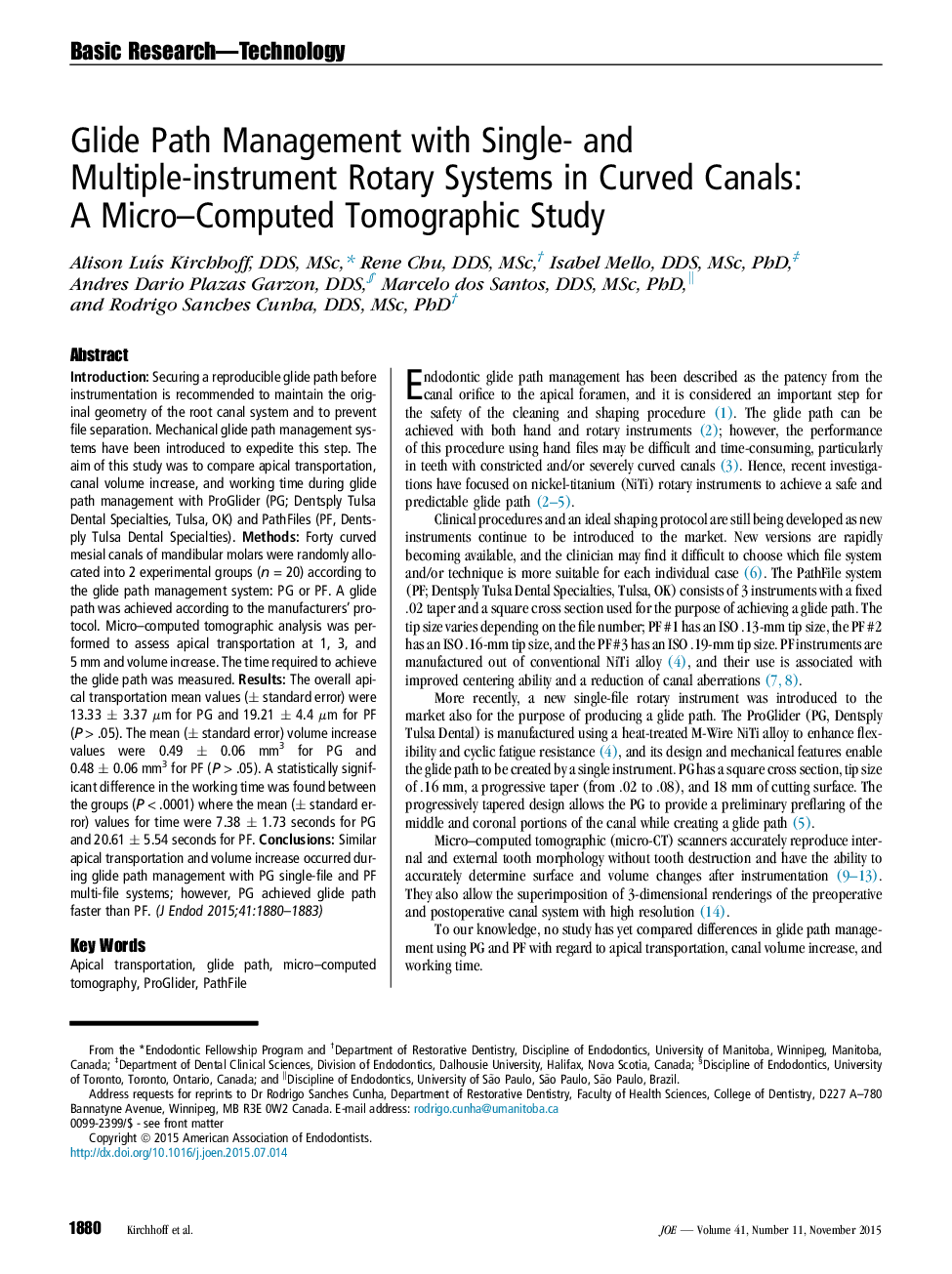| Article ID | Journal | Published Year | Pages | File Type |
|---|---|---|---|---|
| 3146561 | Journal of Endodontics | 2015 | 4 Pages |
IntroductionSecuring a reproducible glide path before instrumentation is recommended to maintain the original geometry of the root canal system and to prevent file separation. Mechanical glide path management systems have been introduced to expedite this step. The aim of this study was to compare apical transportation, canal volume increase, and working time during glide path management with ProGlider (PG; Dentsply Tulsa Dental Specialties, Tulsa, OK) and PathFiles (PF, Dentsply Tulsa Dental Specialties).MethodsForty curved mesial canals of mandibular molars were randomly allocated into 2 experimental groups (n = 20) according to the glide path management system: PG or PF. A glide path was achieved according to the manufacturers' protocol. Micro–computed tomographic analysis was performed to assess apical transportation at 1, 3, and 5 mm and volume increase. The time required to achieve the glide path was measured.ResultsThe overall apical transportation mean values (± standard error) were 13.33 ± 3.37 μm for PG and 19.21 ± 4.4 μm for PF (P > .05). The mean (± standard error) volume increase values were 0.49 ± 0.06 mm3 for PG and 0.48 ± 0.06 mm3 for PF (P > .05). A statistically significant difference in the working time was found between the groups (P < .0001) where the mean (± standard error) values for time were 7.38 ± 1.73 seconds for PG and 20.61 ± 5.54 seconds for PF.ConclusionsSimilar apical transportation and volume increase occurred during glide path management with PG single-file and PF multi-file systems; however, PG achieved glide path faster than PF.
